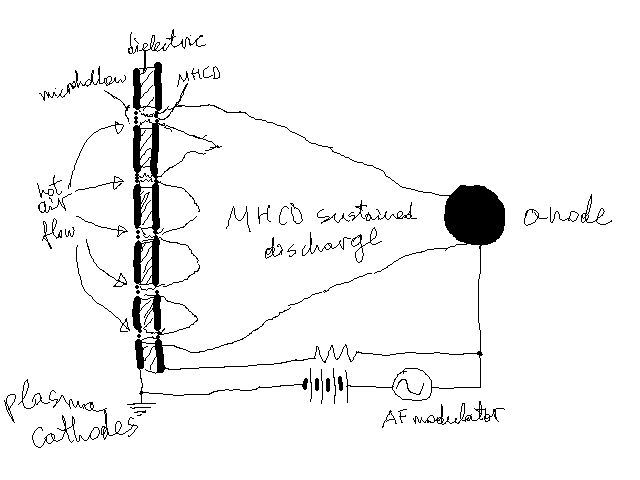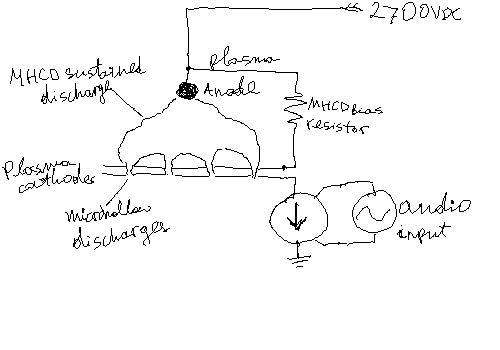Quince
National Hazard
   
Posts: 773
Registered: 31-1-2005
Location: Vancouver, BC
Member Is Offline
Mood: No Mood
|
|
Alumina
This is more materials science than chemistry, but I thought I'd try here.
Is it possible to make your own alumina ceramic? I need sub-millimeter thick wafers of a high temperature, high electrical breakdown material, and
mica didn't work as it is physically too weak. I'm having trouble finding any place to buy thin alumina wafers in small amount for a
reasonable price, so I'm wondering if I could make my own.
Another thing is, other than tungsten, is there any conductor that can withstand high temperatures, and not erode (this is in atmospheric air)?
Again, I need sub-millimeter thick pieces.
Finally, I need to figure out a way to drill sub-millimeter diameter holes in both, and the hole walls must be smooth, not ragged.
\"One of the surest signs of Conrad\'s genius is that women dislike his books.\" --George Orwell
|
|
|
chemoleo
Biochemicus Energeticus
    
Posts: 3005
Registered: 23-7-2003
Location: England Germany
Member Is Offline
Mood: crystalline
|
|
I don't think it'd be easy. Although alumina cements can be made at home of course, making sub-millimeter thickness wafers should be very
hard. The only way I can see this to work is to pressure the alumina composition into correct molds, and then to harden it at high heat.
Plus you'd have to work out the optimal composition so that the wafers don't crumble at the slightest touch.
A lot of work.
I am tempted to merge this with a thread on a similar subject...hmmm.
Never Stop to Begin, and Never Begin to Stop...
Tolerance is good. But not with the intolerant! (Wilhelm Busch)
|
|
|
Quince
National Hazard
   
Posts: 773
Registered: 31-1-2005
Location: Vancouver, BC
Member Is Offline
Mood: No Mood
|
|
I need to make MHCD (microhollow cathodes). Pendulum electrons in the hole between the two conductive wafers (insulator sandwitched in between)
create a glow discharge. This discharge can then be used as a cathode for a much larger discharge. As opposed to using simple electrodes, this
avoids cathode fall instabilities causing a GAT (glow-to-arc transition) and allow stable large discharges in plain air. There are some papers I can
cite for references, but the idea is old.
I'm applying this to make versions of Dr Hill's Plasmatronics speakers without the need for helium (he used it due to low breakdown).
Replacing a helium tank every few months is what made these impractical. But plasma is by far the lowest distorting driver. Hill's patent is
4,219,705, and I got some details of the actual implementation from an owner (there were few units sold). The amplifier is essentially a voltage
controlled current sink at the cathodes (plasma anodes go to power supply).
The complication with using MHCD cathodes is that the discharge is no longer 'normal' (that is, constant voltage). Well, that's at
least for DC characteristics; I've not found any data on AC characteristics of glow discharges during my research. I can't do
experimentation yet, as I've yet to make chimneys for my output devices, Eimac 4X150 tetrodes I got brand new off eBay for next to nothing (the
sockets cost me more than the tubes, but I got them used as new sockets for ceramic tubes can be a couple of hundred or more).
\"One of the surest signs of Conrad\'s genius is that women dislike his books.\" --George Orwell
|
|
|
Eclectic
National Hazard
   
Posts: 899
Registered: 14-11-2004
Member Is Offline
Mood: Obsessive
|
|
Alumina wafers occasionally show up on Ebay .010-.040 thick as electronics substrates. The same guy that sold these: http://cgi.ebay.com/ws/eBayISAPI.dll?ViewItem&category=2...
You can drill a smooth hole with copper rod or tube and diamond grit/dust from lapidary supply.
|
|
|
Mr. Wizard
International Hazard
    
Posts: 1042
Registered: 30-3-2003
Member Is Offline
Mood: No Mood
|
|
BTW these thin Alumina plates make great dielectric separators for DIY Ozone generators. I converted a small 'Bug Zapper' to an Ozone room
deodorizer with two similar plates and some aluminum window screen between them. The HV source and the fan in the bug zapper did the job very well,
and it still gets an occasional bug ;-)
This will take food and pet odors out of a room , but don't leave it on all the time unless you want a headache or worse. It is toxic.
|
|
|
Quince
National Hazard
   
Posts: 773
Registered: 31-1-2005
Location: Vancouver, BC
Member Is Offline
Mood: No Mood
|
|
Attached to this post is my power supply (this has already been built). I'm planning to add a regulator, though it should be OK without it. The
current source at the end of the schematic represents the load, obviously, not part of the supply. Diodes are 8 x 1N4007 in series. Works with no
problems, even though I've mixed from different manufacturers. First two caps are series-parallel chains of electrolytics and equalizing
resistors. Final is 3 x 3 kV, 40 uF film in oil huge cans I got off eBay. Resistors are 2 x 75R, 22 W. Choke was handwound. Transformer is rebuilt
and heavily modified large microwave oven transformer. More details I've written in another thread here, about igniting thermite if I remember
correctly.

\"One of the surest signs of Conrad\'s genius is that women dislike his books.\" --George Orwell
|
|
|
Quince
National Hazard
   
Posts: 773
Registered: 31-1-2005
Location: Vancouver, BC
Member Is Offline
Mood: No Mood
|
|
Detail showing the complex cathodes is attached. Thickness of wafers is under 1 mm, as are hole diameters.

\"One of the surest signs of Conrad\'s genius is that women dislike his books.\" --George Orwell
|
|
|
Quince
National Hazard
   
Posts: 773
Registered: 31-1-2005
Location: Vancouver, BC
Member Is Offline
Mood: No Mood
|
|
High level overview of the setup is attached. The triangular shape of the plasma is necessary, as each discrete region along the vertical axis has a
different peak in the frequency response; this is a way to get a fairly flat frequency response for the whole thing. The patent elaborates. The
discharge is maybe a couple of cm in size, and is situated in the groove of a heatsink, which also regulates the thermal relaxation constant. Again,
patent explains this.
(I say again, what's different about what I'm doing from the patent is that I plan to avoid using helium for the discharge by using MHCD to
sustain the discharge in atmosheric air; NOx and O3 may become a problem, but I have ways around that).
[Edited on 10-2-2005 by Quince]

\"One of the surest signs of Conrad\'s genius is that women dislike his books.\" --George Orwell
|
|
|
JohnWW
International Hazard
    
Posts: 2849
Registered: 27-7-2004
Location: New Zealand
Member Is Offline
Mood: No Mood
|
|
Large ruby and sapphire crystals, which are crystalline alumina (corundum) with some of the Al atoms replaced by Cr(III) or Ti(III) plus Fe(III)
respectively, are grown commercially in the form of large cylindrical single crystals by slow crystallization from the molten state. The artificial
rubies are used to make red lasers. The melting-point of corundum is given as between 1,999ºC and 2032ºC, which is the temperature required. The
equipment needed is fairly expensive, but the production is quite lucrative.
[Edited on 11-2-2005 by JohnWW]
|
|
|